We often treasure keepsakes because they house memories of important people or places. The conversation piece is a common prop for travellers’ tales. And in the case of the heirloom, we have an object whose story is ongoing, in the thread that connects future generations. But by far the most common place for stories has been in books, which we keep on our shelves long after they have been read as placeholders for the mark they have left in our imaginations. As books recede in importance, will objects play an increasingly important role as places to keep our stories?
Andrew Stinear | Angana Nanavaty | Ansie der Welt | Behrouz Siefollahi | West Bengal | Bridget Kennedy | Bula’bula arts | Emma Peters | Fiona Gavino | Gopika Nath | Helen Wyatt | Hermannsburg | Janine McAullay Bott | Johanna Beasley | Jordan River | Nick Wirdnam | Nidhi Khurana | Paul Leathers | Pei Wu | Samira Ghasempour | Sarah Elson | Saskia Levy | Tim Tate | Xiaohui Yang
Andrew Stinear
- Detail: Andrew Stinear, Apsis, 2012, Silver Plated Tombak, Laser Sintered Polyamide, Polyurethane, Magnets, Dimensions variable, photo: Andrew Stinear
- Detail: Andrew Stinear, Apsis, 2012, Silver Plated Tombak, Laser Sintered Polyamide, Polyurethane, Magnets, Dimensions variable, photo: Andrew Stinear
Sydney Australia
Comprising water beakers and condiment dishes, this tableware was inspired by Historian Jenny Uglow’s book ‘The Lunar Men: The Friends who Made the Future’. The book traces the stories of the Enlightenment era men and women whose discoveries ignited the first Industrial Revolution. The group met monthly on the Sunday closest to the full moon to discuss business, science and philosophy over dinner, using the moonlight to guide them home.
The centrepiece was made using a combination of CAD, 3D printing and traditional hand-raised silversmithing and fabricating techniques. Apsis references the ball and stick atomic models used when the first elements were scientifically classified. In the spirit of discovery, the tableware combines using magnets, enabling the user to create and discover something new whenever it is used. The subtle magnetic force is an allegory for the intangible bonds that bind like-minded people together.
Instagram: @andrewstineardesign
Angana Nanavaty
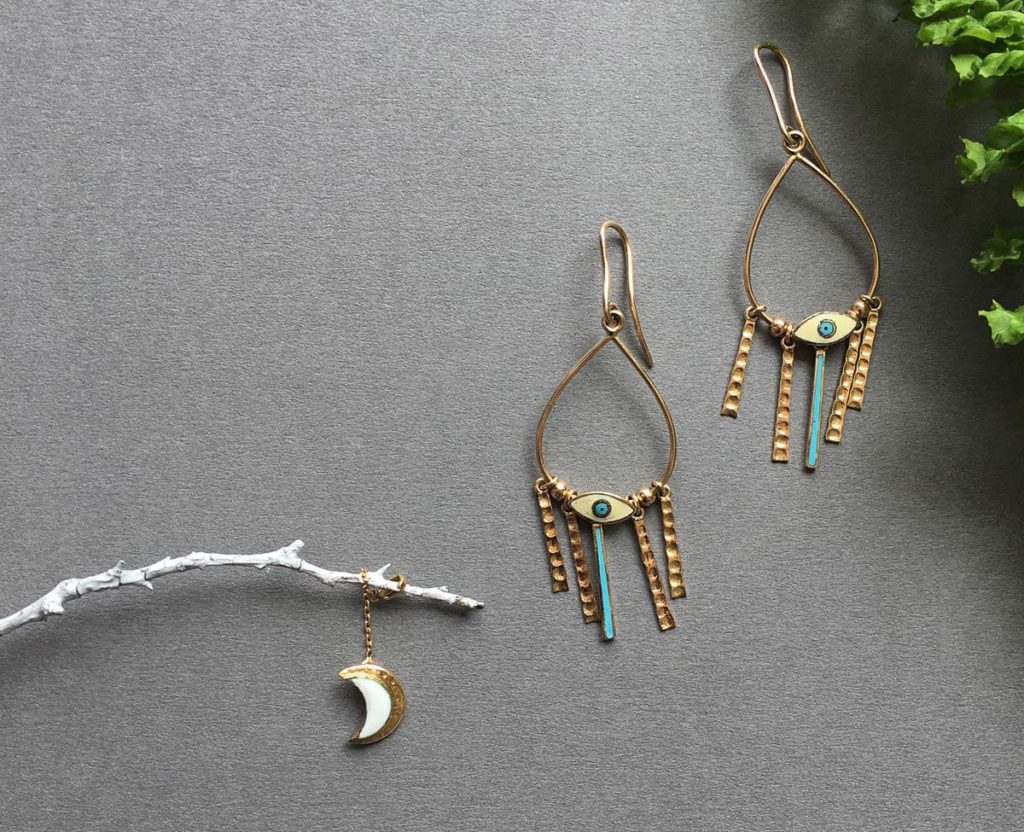
Angana Nanavaty,
|| Third Eye ||| is Awaken and
||| Waxing Moon ||| is Progress, 14k gold and glass enamel
Mumbai, India
The third eye has always been a source of fascination for various ancient civilisations. In Egypt it is depicted as the Eye of Horus. Indian yogis understand the power of the pineal gland and have discovered that on opening the third eye one transcends the past and future to bring awareness to the now. Treat this as an amulet to keep you centred and protected.
Psychologists have debated the effect of phases of the moon on behaviour patterns. It is a well known fact that the female cycle coincides with the waxing and waning of the moon. Bio agriculturalists have understood that the waxing moon is a promise of abundance and progress. One needs to observe the tide on a full moon night to dispel any doubt.
Instagram: @ angana.nanavaty
Ansie van der Walt
- Ansie van der Walt, The Marriage Bed, 2015, wire yarn wood, 1.8mx2.0mx50cm, photo: Ansie van der Walt
- Ansie van der Walt, The Marriage Bed, 2015, wire yarn wood, 1.8mx2.0mx50cm, photo: Ansie van der Walt
Dubai and Adelaide
“My kombers en jou matras” meaning “My blanket and your mattress” Inspired by the lyrics from an old Afrikaans folk song, I used the wire frame from our marriage bed, and a blanket I knitted from yarn collected throughout my adult life to create a sculptural piece representing our marriage. (full description with photos)
Bridget Kennedy
- Bridget Kennedy, Soon my love, 2015, Birmingham sterling silver hairbrush made by Synyer & Beddoes 1920, Fijian pandanas fibre voivoi mat, linen thread, 190mmx73mmx8mm, photo: Bridget Kennedy
- Bridget Kennedy, Soon my love, 2015, Birmingham sterling silver hairbrush made by Synyer & Beddoes 1920, Fijian pandanas fibre voivoi mat, linen thread, 190mmx73mmx8mm, photo: Bridget Kennedy
Sydney, November 2015
This work was made for a show called ‘absence’. Specifically this body of work reflected on impermanence and the meaning that objects can have in relation to deceased and missed loved ones, and how they can help us in the process of grieving. This particular work reflects my childhood in Fiji and the memory of Margaret, my fairy godmother and the time she spent with us there. The silver brush was her mother’s and was left to me when she died. I replaced the bristle hairs with the Fijian voivoi mat as this is one of me earliest sensory memories. My dear, dear stepfather who helped me with some of the fabrication of the work in this exhibition and had always supported me in my practice was accidentally killed two days later, which is sadly ironic.
http://www.bridgetkennedy.com.au
@bkandco
Bula’bula arts and the artists
- Betty Matjarra, Mindirr, 2016, Pandanus and natural dyes, approx.15x10x10cm Julie Djulibing, Mindirr, 2016, Pandanus and natural dyes, approx. 34x16x18cm Julie Djulibing, Mindirr, 2016, Pandanus and natural dyes, approx. 20x15x15cm Betty Matjarra, Mindirr, 2016, Pandanus and natural dyes approx. 18x12x12cm photo: Geraldine Kelly
- Collecting Pandanusnear Ramingining. July 2016. Left to right: Mary Rrikili, Betty Matjarra, Lynette Birriran, Julie Djulibing. Photo: Geraldine Kelly
Geraldine Kelly, writing on behalf of Bula’bula arts and the artists.
Ramingining
Weaving plays an integral role in the lives of many women in Ramingining and the extensive knowledge of the incredible processes continue to be passed down from generation to generation.
https://www.facebook.com/bulabulaarts/
Crafts Council of West Bengal
Scroll Painting
- West Bengal scroll painting
- West Bengal scroll painting
The state of West Bengal has a distinctive tradition of scroll painting, known as Patachitra and the Patachitrakars from the districts of South Medinipur are well-known. The scrolls are painted with vegetable dyes and fixed with gum on paper. The panels are pasted together on fabric, such as old saris to strengthen the scroll.
These scrolls follow the conventions of an age-old narrative tradition and form an extraordinary artwork. Patachitra scrolls traditionally portray stories from epics and folk legends and are sung frame by frame. The patachitra scrolls may portray stories from the great Hindu epics, such as the Ramayana, as well as Sufi/Muslim traditions. In recent times, modern subjects including comments on social reforms are also to be found in these scrolls.
Kalighat Painting
- West Bengal Kalighat painting
- West Bengal Kalighat painting
Kalighat painting originated in the 19th century Bengal. The paintings over a period of time developed as a distinct school of Indian painting. From the depiction of Hindu gods, god, and other mythological characters, the Kalighat paintings developed to reflect a variety of themes. The Kalighat School was steadily gained popularity.
Emma Peters
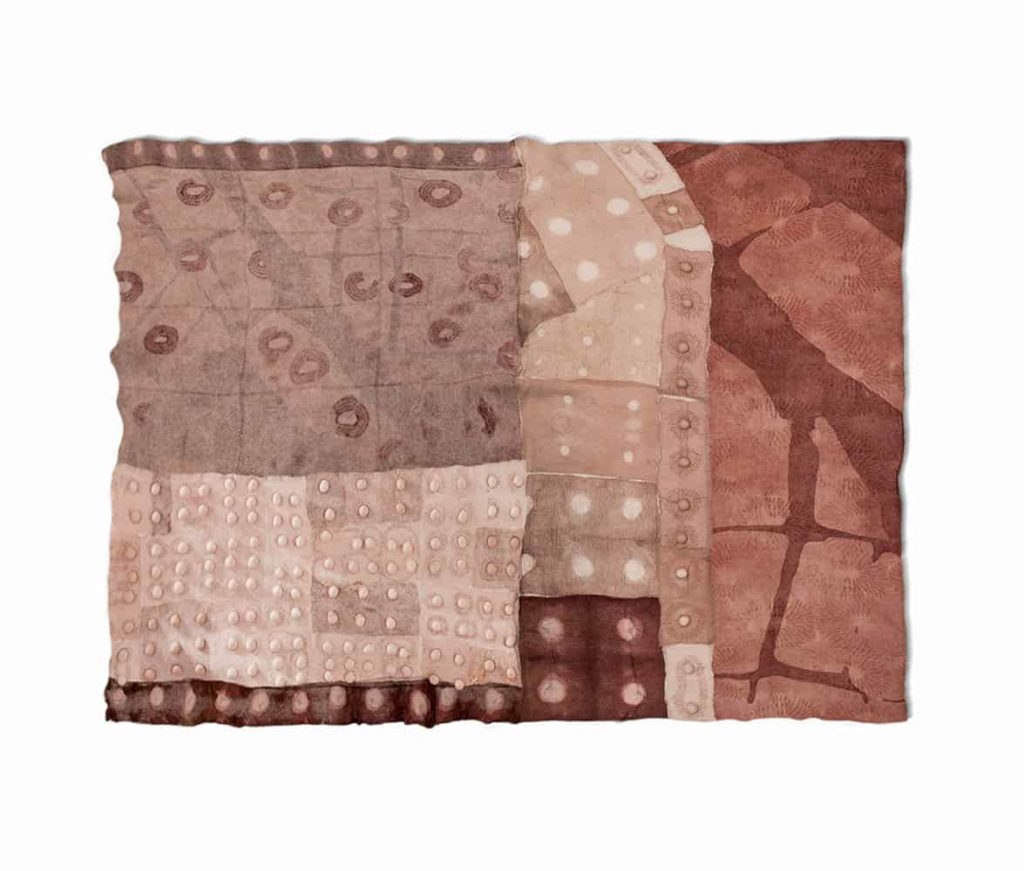
Emma Peters, Topography of Memory Quilt, 2015, wool, muslin and silk, 160 x 253 cm, photo: Hannah Morgan.
Sydney, Australia
Topography of Memory responds to memory of place and experience both past and present, that challenges my identity as a mother and non-indigenous Australian artist respectfully responding to the land of the Wiradjuri Nation.
Instagram: @emma_peters_textiles
Fiona Gavino

Fiona Gavino, Homage (to Nalda Searles and my Father via Louise Bourgeois and Robert Mapplethorpe), 2016 giclee print
Fremantle, Australia
My father and I are somewhat the black sheep of the family and we two were very close. My father like Robert Mapplethorpe A touching (if a little cheeky) tribute to a seminal fibre artist.Fiona Gavino, Homage (to Nalda Searles and my Father via Louise Bourgeois and Robert Mapplethorpe), 2016 giclee printMy father and I are somewhat the black sheep of the family and we two were very close. My father, like Robert Mapplethorpe, was taken by the first wave of HIV that swept through the gay community in the 1980’s. This lends me the empathy and comfort to feel familiar and to be able to reference the work of Mapplethorpe. In my self-portrait, I have also referenced the great living treasure and fibre artist Nalda Searles who is the grandmother of the Central Australian fibre art movement and a significant Australian artist. My ‘La Fillette’ that I am posing with in the artwork is cobble-stitched—a technique Nalda is re-known for.
Gopika Nath

Gopika Nath, Mapping Mindstains, 2013, cotton fabrics, nylon net, silk
cotton floss, cotton-polyester thread, technique: layering, tearing, pulling, stitching,
staining with tea-leaves, 15.5 x 17.75 inches – unframed, photo credit: Amitabha Bhattacharya
Goa, India
The Chai Project
I enjoy my cup of tea and have a cupboard full of various teas from Jasmine to Darjeeling, Nilgiri, Assam, Herbal teas, Japanese Sencha and Genmaicha and I also enjoy a cup of good old desi masala chai. All of them have a different texture or leaf. The Jasmine leaves uncurl their sly tendrils under the influence of hot water, looking suspiciously serpent like. Remnants of various condiments of a rich masala chai, stain the cup with lines so evocative that I have spent the better part of two years, recording them. Photographing marks left in the cup, half drunk or emptied of all the liquid content. In the process I have also studied dimensions of the cups and mugs that I have drunk from.
I pondered on these images for a long time, wondering how to translate them into something I could share and decided to have them digitally printed onto fabric. I then worked with layered images, using the ‘stains’ to reflect a state of mind. These marks became evocative of guilt, shame and blame, the kind of thoughts we carry around us that come up under self-reflection or introspection; of thoughts mulling over a cup of tea.
There have been many instances in my life, where I think of what it would have been like had I done things differently. The list is endless and the marks in the tea-cups thereon, allowed me to go back in memory, delve deep into my psyche revealing familial histories and national influences; making me realise I could not have done any different. Life played herself out such that this is what it was meant to be. I have never really accepted the concept of destiny but started realizing that the only choice one ever has is the attitude with which we accept what occurs in life.
This exploration was not necessarily comforting and dealing with various feelings and thoughts, I would tear the fabric, pull it into different directions, distorting the weave, creating bunches and bulges which the running stitch that I have chosen to work with, often exaggerated or quelled, depending upon the mood I wanted to portray. I discovered the wonders of the running stitch through an article I read three decades ago, on the Sujni’s of Bihar. I liked the idea of taking the old and making something useful from what has been, fashioning it into something new. It allowed me the grace to pick up old memories, wounds and issues, deal with them through the process of tearing, layering and stitching to lend another perspective to things, renewing the spirit, taking control of the past towards deeper realizations which empowered through the process of looking.
These meditations on tea, tea leaves, tea cups and the process of drinking became a fascination; you could even call it a kind of obsession. Each day there seemed to be yet another nuance that I absolutely must have in my photographed collection. I didn’t want to make this into an elaborate project extraneous to my life and surroundings so I stopped at various points on my route from Gurgaon to Delhi and looked at things around me more keenly. A lot of what I did record is what we know well and stopping, observing and recording these images, opened up a whole new dimension that I would otherwise miss as I blinked in the car or walked past, too preoccupied to notice.
I did engage with everyone that I photographed. Some were shy; some got angry, some did not even notice. I became engrossed in the people and now am unable to ignore them like before. I began noticing little things: the way they sat, the way they dressed, the way they treated me, talked to me. Gradually, a dialogue ensued that compelled me explore the national psyche which I believe mirrors my own. And thus looking, at the dregs in my tea-cup and the world around it that creates the illusions of ‘stains’ in the mind, I found myself change.
Helen Wyatt
- Helen Wyatt, Headland series 2016, 925 silver, brass, stainless steel, 7x5cms, photo: Helen Wyatt
- Helen Wyatt, Headland series 2016, 925 silver, brass, copper, stainless steel, 6x5cms, photo: Helen Wyatt
- Helen Wyatt, Headland series 2016, 925 silver, brass, stainless steel, 7x3cms, photo: Helen Wyatt
Sydney, Australia
The headland between Bronte and Clovelly beaches in Sydney, Australia, is a site of sunny natural beauty and luxurious lifestyle. It has another side: wild nature, invasion history, and urban development.
The Trainhouse draws on an icon that holds childhood memories for many; the Cutting recalls the path cut through ancient sandstone for tram passage. The Walkway traces the route propped up around the headland and into the cemetery – capturing some of its qualities through the deciduous creeper the bears testament to growth and decay.
https://www.facebook.com/f.tannerbaker/
Instagram: @ftannerbaker
Hermannsburg Potters
Hermannsburg, Northern Territory, Australia
Hermannsburg Potters Coordinator Isabelle Waters-Lynch, writes:
“For the people of Ntaria, the warmer months leading up to Christmas can be a time of reprieve and celebration. Football season is over, and men and women prepare for mpwuntha or ‘cultural business’ – a strictly private affair. The ascent of heat is sudden; the landscape shifts. Budgerigars appear in flocks and Port Lincoln parrots play in the dry trees. The wily-wagtail lets the people know when the big rains are coming. These are the months of ltharta – public ceremony. Koprilya Day is held in October, to memorialise the building of the pipeline from Koprilya to the Hermannsburg Mission. A service is held at the site of this permanent waterhole, with its associated rain and hail stone Dreamings. A parade follows Kalwa Station races. Children dress up in extravagant cowboy regalia and the winning jockey is rewarded, as are the best dressed! As Christmas approaches, staff go on annual holidays and programs close down. The local store shelves are filled with kitsch. Plastic reindeers are seen hanging from ghost gums and solar lit stars silhouette the township’s facades. A sense of place is renewed: ingkarraka nyinterrama lthartaka, arrkanerramanga aritjika / everyone comes along to enjoy the ceremony.”
Thanks to Alcaston Gallery
Janine McAullay Bott

Janine McAullay Bott, Fish Trap Year: 2016 Medium: Palm fronds (Queen Palm); agave, mulberry branch, curtain rings, gum nuts Size:18x44x44cm Cat: ART-JMB1016-3 (the artist is represented by Artitja Fine Art Gallery)
Perth, Australia
THE FISHTRAP REPRESENTS NOURISHMENT
A WAY TO SOURCE FOOD FROM THE RIVERS OF THE SOUTH WEST
NYOONGAH COUNTRY
MANY A GOOD YARN BEING TOLD
WHILE THE NYOONGAH’S GATHERED MATERIALS
SAT AROUND THE CAMPFIRE
MAKING THEIR FISHTRAPS
A GOOD STRONG TRAP MEANT
A GOOD FEED
AND RECOGNITION
GIVING PRIDE AND SPIRITUAL WELLBEING
TO ITS MAKER
WHO HAS SPENT DAYS WEAVING
FOR THIS SOCIAL EVENT OF FOOD GATHERING
TO BE SHARED
AMONGST THE WHOLE GROUP
FISHTRAPS COME IN ALL SHAPES AND SIZES
CERTAIN STYLES
A SIGNATURE OF ITS MAKER
AND MATERIALS
GUM TREE BRANCHES
REEDS
BOUND TOGETHER BY KANGAROO SINEW
OR VINES
DEPENDING ON THE AREA OF THE CAMP
MANY DIFFERENT MATERIALS
ALONG THE RIVER BANKS
NYOONGAH’S TRAVELLED THEIR COUNTRY
FISHING HUNTING AND GATHERING
A SIMPLE NOMADIC LIFE
THEIR GREATEST POSSESSION
THE LAND THAT THEY TREAD UPON
Johanna Beasely
Suva, Fiji
This work celebrates the Fijian enjoyment of ’Kana’. It also attempts to draw attention to the changes in in Fijian diet and eating habits. I wanted the viewer to think about the results of unhealthy eating patterns. Tinned food now replaces fresh food. Noodles have become a large part of the Fijian Diet. There has been widespread increase in non-communicable diseases in Fiji. Climate change has also impacted on access to traditional food sources, fresh fish availability has decreased and locals are seeking alternative fast foods to compensate. I used a traditional vau base, the labels of tinned fish and tinned beef to make decorate the salusalu. The aluminium cutlery symbolizes the influence that colonisation has had on Fijian eating habits Food is life and traditional Fijian food sources are shrinking.
Jordan River Foundation

Jordan River Foundation. jpg , Turath, 2016, Printed fabric, cotton thread , wood frame, dimension: 72*102 cm, Photo: Jordan River Foundation
Jordan
A mixed media piece of art where modern join tradition. The product is a vintage and very old picture of a lady from Palestine printed on cotton fabric and embroidered using the Ramallah stitch to compliment and highlights parts of the pictures giving it a traditional yet modern feel that can suit any home.
http://www.jordanriverdesigns.com
Instagram: @Jordanriverdesigns
Nick Wirdnam
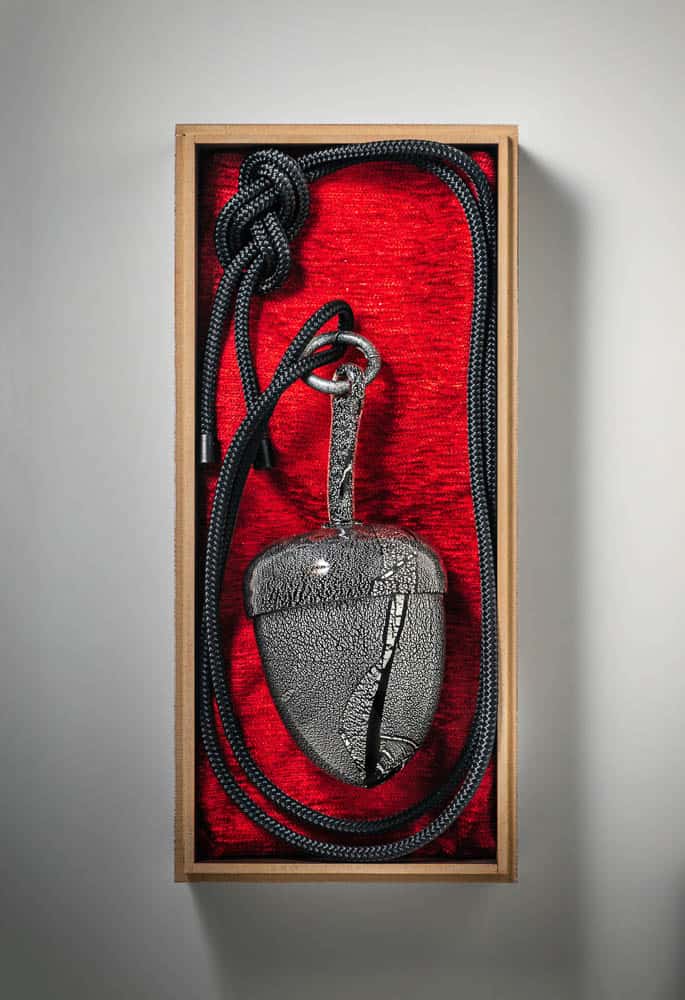
Nick Wirdnam, Silver Acorn, 2016 Blown & hot sculpted glass, silver leaf, MDF, polyester, fabric, copper & alloy H 33 x W 15 x D 12cm $4,500 AUD incl GST
Melbourne, Australia
Often drawing on cultural beliefs, personal circumstance or experience we develop systems which offer comfort and security. We invest value in symbols and objects which protect us from misfortune and provide hope and promise. This work employs familiar objects with an historical association of good fortune, hope and consolation. The role of charms, has changed over time from that of practical use and as a means of warding off evil, to a purely aesthetic one. Queen Victoria’s own fascination with charms, jewellery and pendants made charm bracelets enormously popular amongst the gentry of the time, as a luxurious fashion items. It was common for the affluent in society to show off their fortune by wearing elaborate and exotic clothing and the wearing of charm bracelets as a fashion accessory capturing emotion and personal memories. I prefer the older and more practical belief that small ornamental objects reputedly had a certain power as amulets or lucky charms. these charms were worn as symbols which offered hope and protection.
My recent (prior to this show) work has be inspired by belief and superstition, often displaying work with a perceived or presumed power which would offer protection hope and consolation to the carrier or individual. Historically, acorns were believed to offer protection from lightning (Norway). It was also believed acorns could preserve youth and offer long life, whilst the English bowman would carry acorns in their pockets believing these would give them courage when fighting the French. So it has been my intention that gathering as many of these objects together often in multiples, I’m increasing the perceived power and fortune associated with the object.
The Sabbia show is titled Charmed, a reference to the objects within the show, coincidently many of the objects which I had made over the past few years are also commonly produced as charms and used in charm bracelets and ornaments on necklaces, so inevitably I had to use silver and gold leaf. gold and silver leaf have been used as a decorative surface in glass for centuries, but my vision required the silver and gold leaf to be more intense, as the precious metals are applied and worked at glass making temperatures 800 – 1050 C, intensity is lost, I developed a technique which maintained the intensity and integrity of the gold and silver
Nidhi Khurana
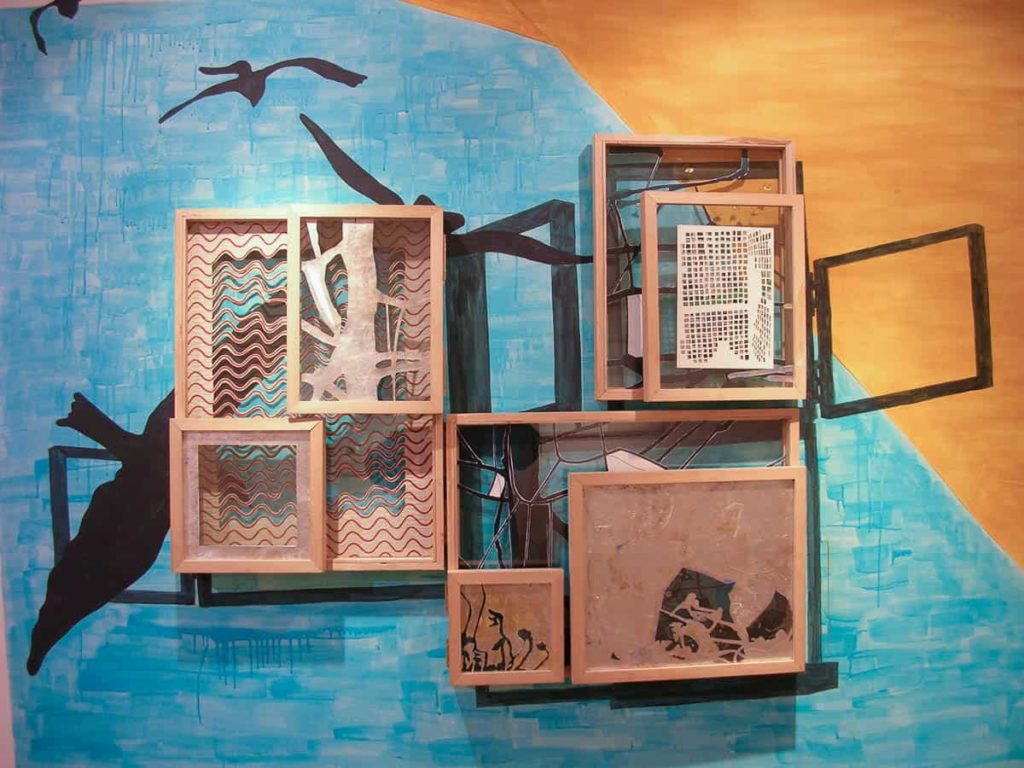
Nidhi Khurana, This, that and everything, mixed media with paper, glass, ink and stitching, variable, photo: Nidhi Khurana
New Delhi, India
2011 was a stressful year for us. We had moved to a rented apartment in South Delhi in 2007. Over a period of three years we thought of that place as home and studio both. However it felt smaller and smaller as the years went by until we decided to shift, mostly in search of a spacious flat. Our fourth year in Delhi went by as we shifted three apartments that year. The only memory I have of those places are the large windows that I constantly looked out. This art work was created as my mind attempted to fly out and free itself from the confines of daily life in a crowded metropolitan city like Delhi.
http://www.nidhikhurana217.blogspot.com
Instagram: @nidhik2
Paul Wm. Leathers

Paul Leathers, Cabinet, mysterious contents of, 304 (v.5.0).tif: Paul Leathers, Cabinet, mysterious contents of, 304 (v.5.0) B, 2003–present (this iteration 2011), 24 karat gold leaf, water-filled glass globe, ceramics, Hydrocal, glass, pewter, Mold Mix 6, powdered graphite, digital print, wood, MDF, paint, cast acrylic, GOBO projected light effect. H. ~30 x W. 26 x D. 26 cm, photo: paul leathers
Red Deer, Alberta, CANADA
Inspired by an entry in the index to Oliver Wendell Holmes’ The Professor at the Breakfast Table, this installation-based wall piece is an open-ended artwork whose elements ebb and flow as it is reconfigured for each iterative presentation. The Arteficialia on view reflect personal histories, interests, and travels.
Pei Wu
- Pei Wu, Mirror garden, 2016, silver, flowers, grass, gold flakes, 6 x 6 x 2.5cm, photo: Moe Sekiya
- Pei Wu, Mirror garden_ detail, 2016, silver, flowers, grass, gold flakes, 6 x 6 x 2.5cm, photo: Moe Sekiya
- Pei Wu, Mirror garden_ side view, 2016, silver, flowers, grass, gold flakes, 6 x 6 x 2.5cm, photo: Moe Sekiya
London, England
The Sylvanian Cat was the first toy Eva chose for herself, and quickly became her favorite possession. until one day, she got into a fight with her brother and he threw it out of the window…
Out of the window was a land full of plants, surrounded by fences. Eva was never able to get inside to recover her lost toy.
But part of her never stopped looking for the cat.
She wondered if the kitty was still in there…
Was she okay?
Was she safe?
Maybe she’s running, chasing a butterfly, climbing a tree…In that land of plants, she’s free forever.
Eva never replaced her toy cat with a new one, because it was so special: the first decision she made herself.
The truth was, Eva saw herself in her.
In fast, Eva never lost what she thought she had.
She just needed to see it for herself…
Lily’s story inspired this unique piece of jewellery.
A brooch but also, a way to remember.
http://reminiscentjewellery.tumblr.com/
Instagram: @reminiscentjewellery
Sarah Elson
- Sarah Elson, The lament of the labellum – transgression, 2016, sterling silver and copper on beading thread, 320 x 45 x 40 mm, photographer Eva Fernandez
- Sarah Elson, The lament of the labellum – transgression, 2016, sterling silver and copper on beading thread, 320 x 45 x 40 mm, photographer Eva Fernandez
Fremantle, Western Australia
The labellum is a feature of many of my works and a powerful signifier for me. It is the medial orchid petal – its soul purpose is to attract a pollinator. The labellum (also known as the lips) is the landing pad for fertilization; it is a point of attraction, connection and the continuation of life.
In The Lament of the Labellum series I have removed the labellum from the phalenopsis orchid, sometimes still with it’s column. This orchid is not from here and it is commonly used as a decorative plant for the fecundity of its very sensual, soft flowers.
Each flower is encased in plaster, burnt out, and poured under vacuum with molten copper and/or silver – the remnants of old jewellery or scraps.
Rapidly quenched, the copper produces enticing crimson reds, and the silver turns a soft white.
The combination of both silver and copper known as shibu-ishi produces earthly shades of pink. Both metals in their oxidized state go from brown to black. These cast forms are then worked – cut, sanded, filed and drilled.
By pulling away the individual labellum I am in effect, pulling away the potential of each new flower, sacrificing its potential for life yet at the same time immortalizing it as an enduring symbol of flesh that is sharp and hard to the touch.
The stringing together of a collection of these parts is an attempt to gain a little backbone, a spine with a flexibility that is stronger as a whole.
http://www.artcollectivewa.com.au/artists/sarah-elson/
Instagram: @sarahjelson
Saskia Levy
Brisbane, Australia
I made this ring based on the tradition of the communal Jewish wedding ring and out of a longing to experience the historical Jewish ways of life in the European shtetls of my ancestors.
Instagram: @saskiameadow
Tim Tate
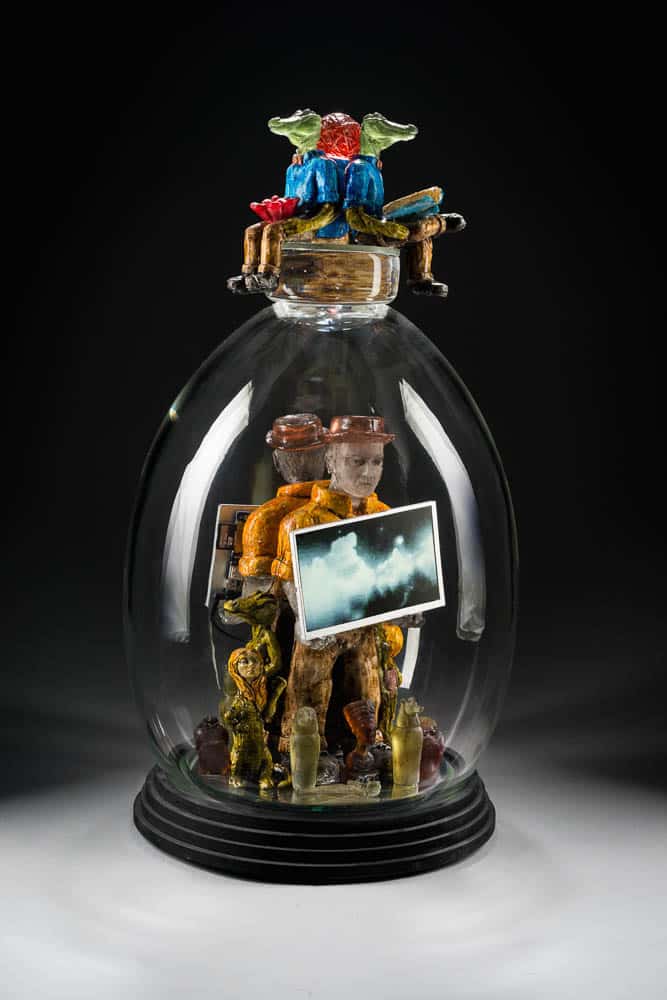
Tim Tate, Guardians of the necropolis, 2014, cast and blown glass, wood, video, 32 inches x 10 inches x 10 inches
USA
Tim Tate, Guardians of the necropolis, 2014, cast and blown glass, wood, video, 32 inches x 10 inches x 10 inches
Videos are the new story tellers. The finial on this piece is of 3 Alligator Men. One holds the Book of the Dead, one holds a lotus flower, one a plum bob. Inside stand 2 large figures, back to back watching over each other. The both hold a video. One video is of flying through night time clouds…one is of billowing curtains in front of a darkened entrance.They are surrounded by Crocodile Women, canopic jars, sarcophagi and Egyptian sculptures. This piece protects the owner from death.
Instagram: @timtate
Xiaohui Yang
- Xiaohui Yang, Relationship Measurement Series, 2015, silver, paper measuring tape, 7x3x9xcm, photo:Lisa Brown
- Xiaohui Yang, Relationship Measurement Series, 2015, silver, paper measuring tape, 7x3x9xcm, photo:Lisa Brown
- Xiaohui Yang, Relationship Measurement Series, 2015, silver, paper measuring tape, 7x3x9xcm, photo:Lisa Brown
Brisbane, Australia
Measurement rings consider the social mores surrounding personal space and physical interaction and they act as a tape measure; anchored to the wearer, the rings quantify the distance separating them from their companion.


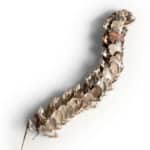
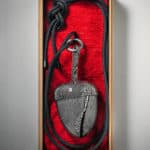
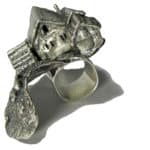
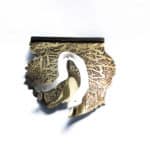
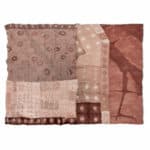

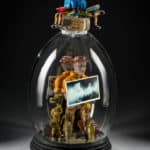




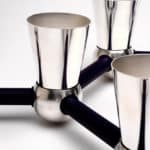

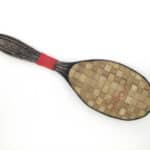
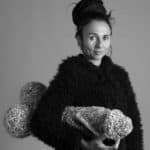
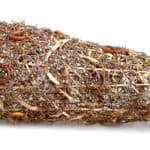
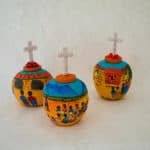
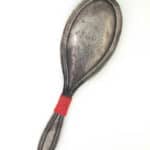
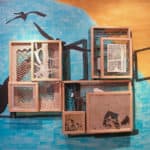
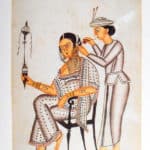


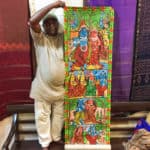
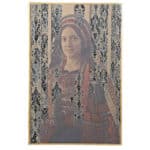


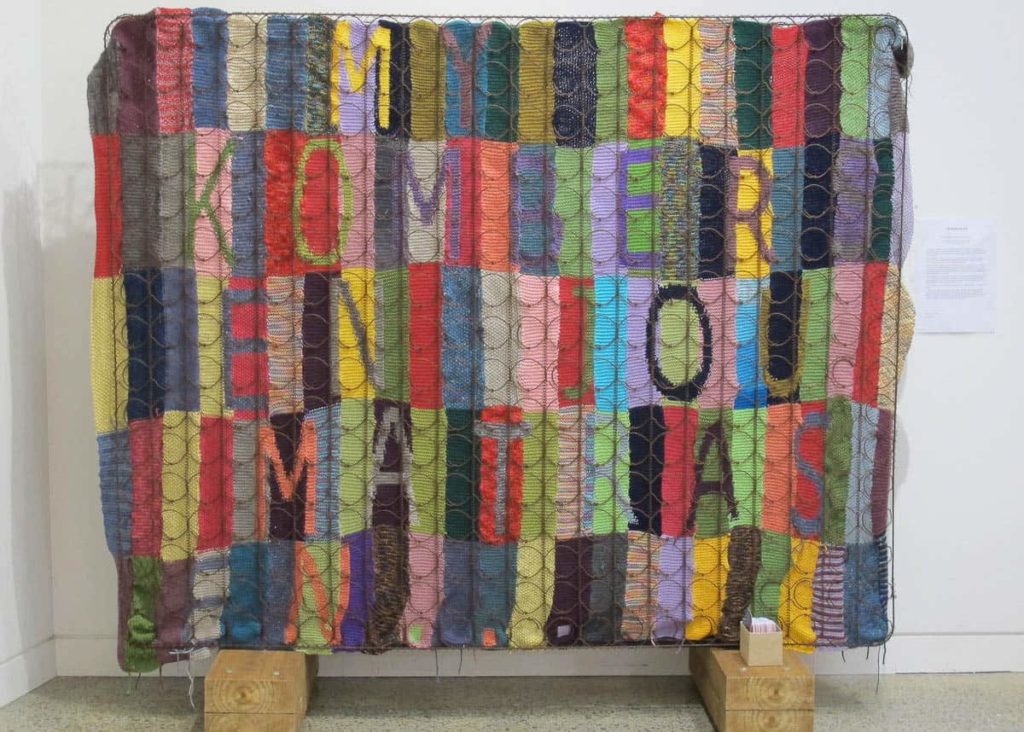

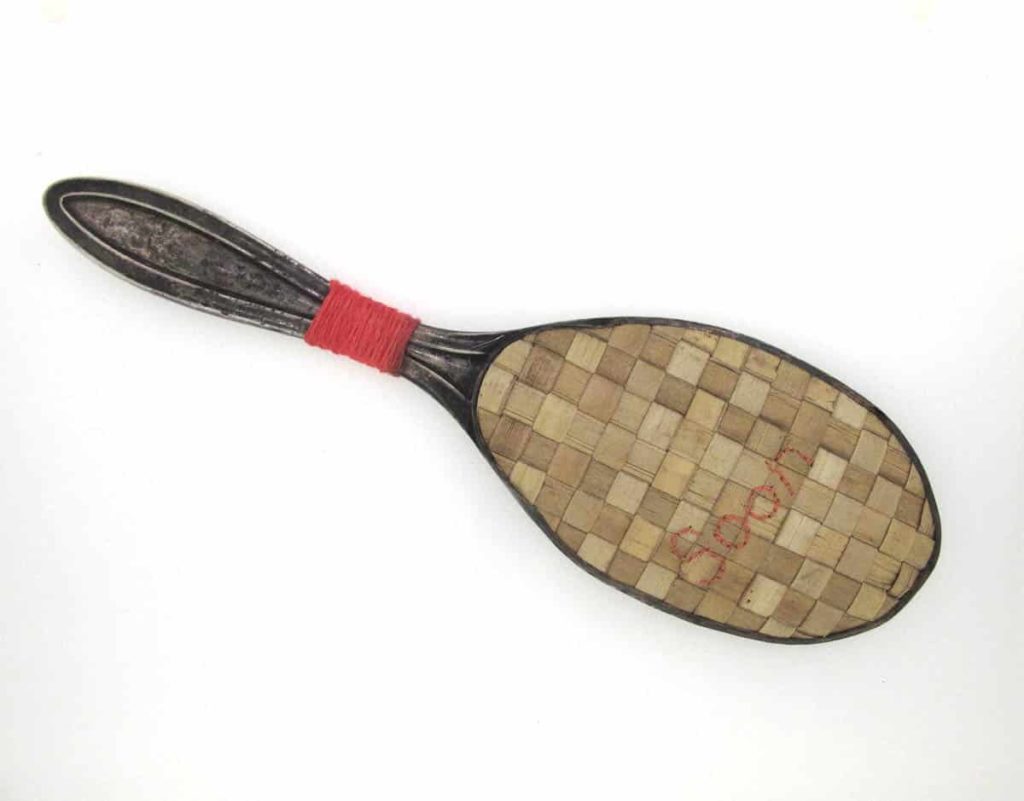
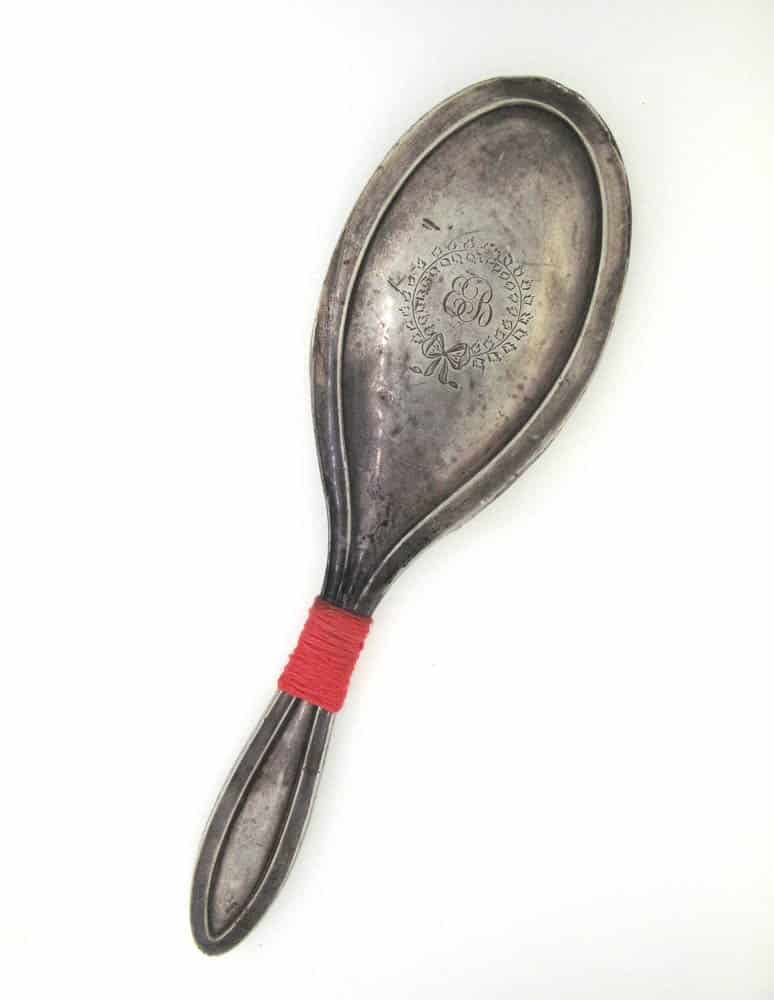
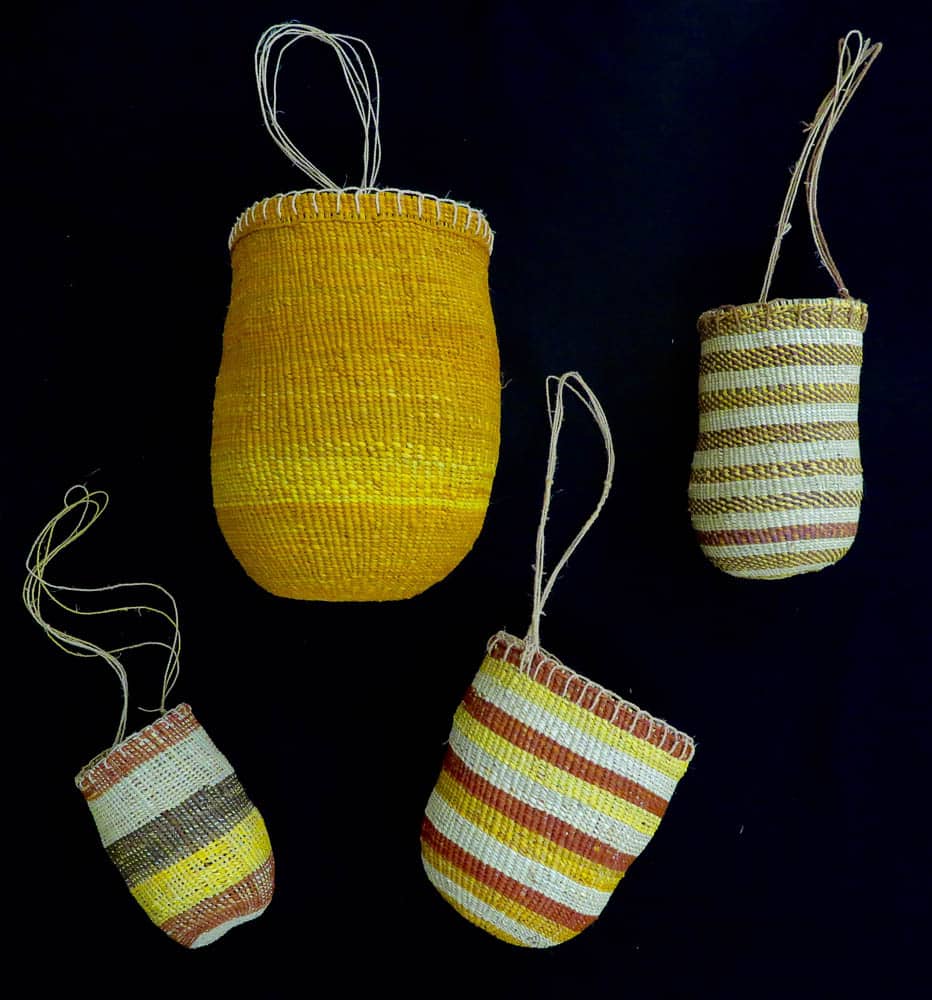
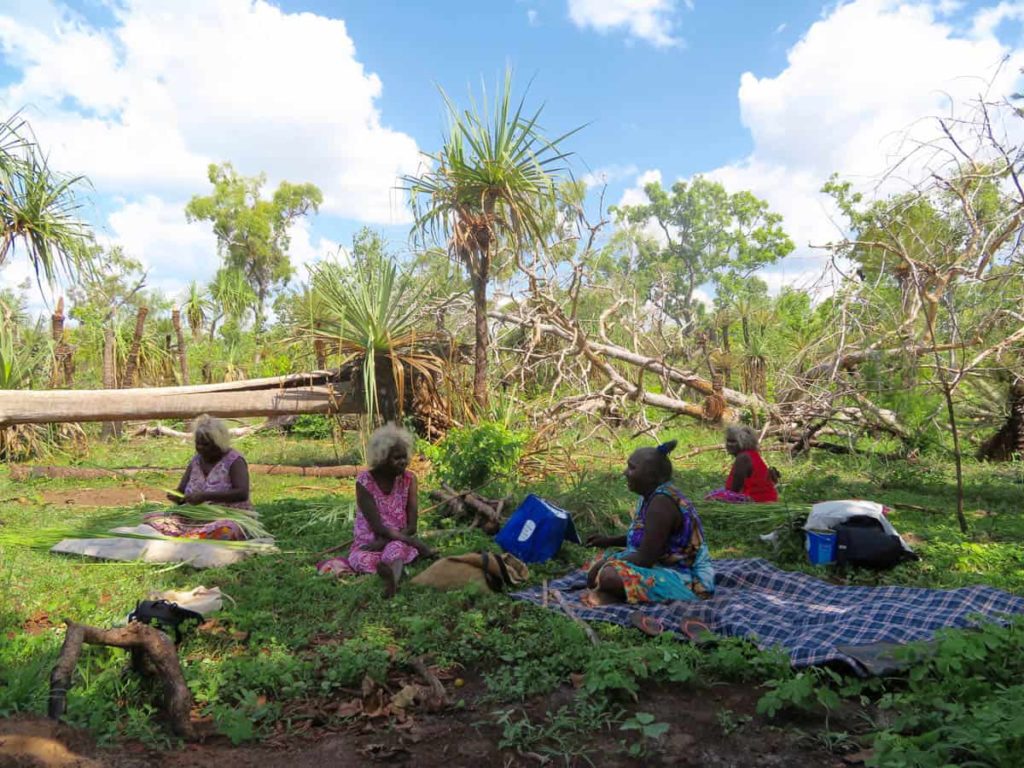
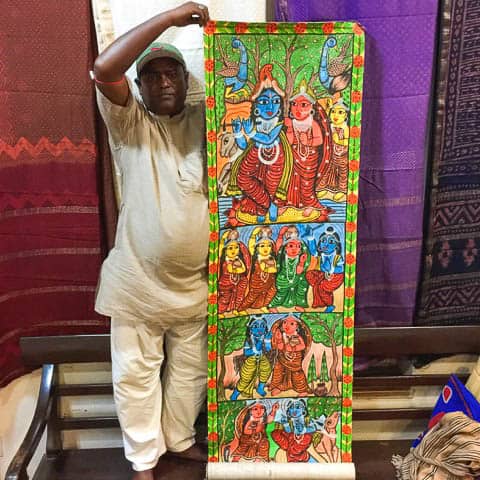
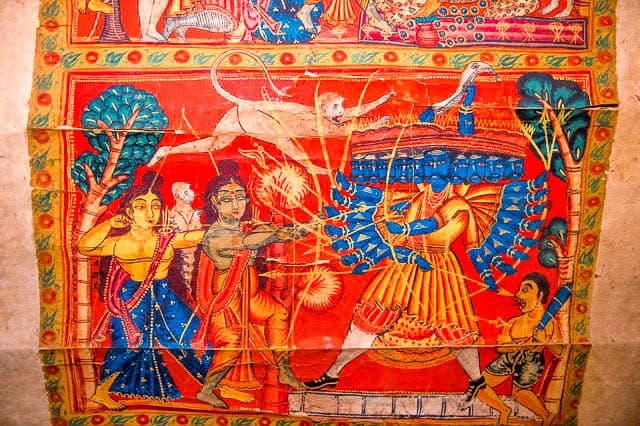


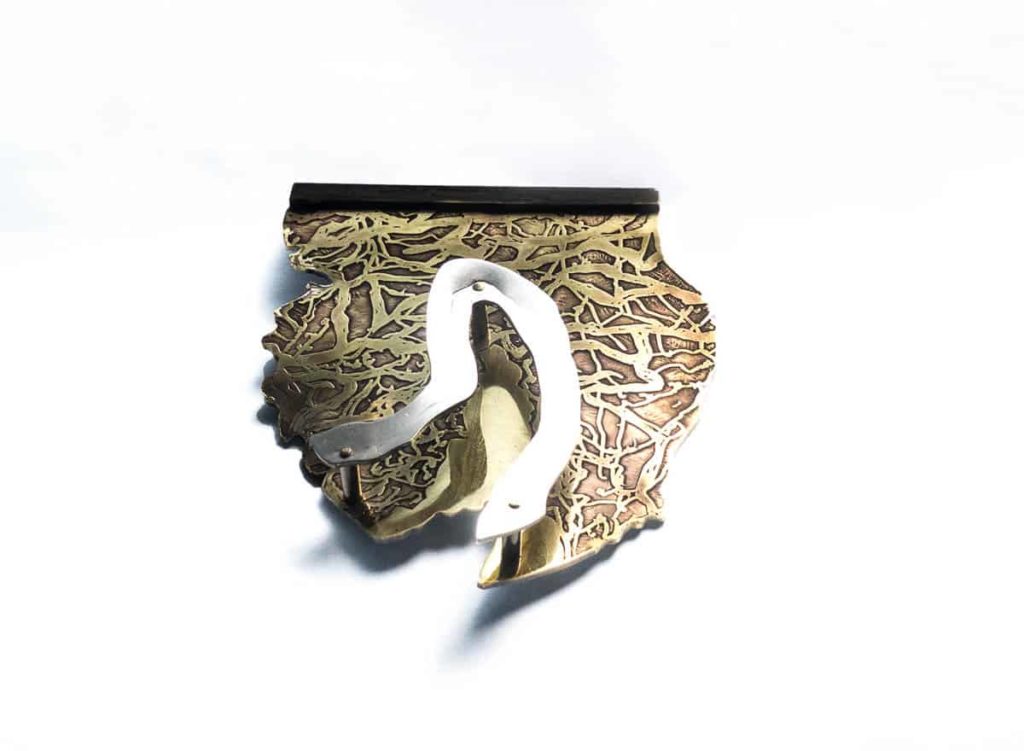
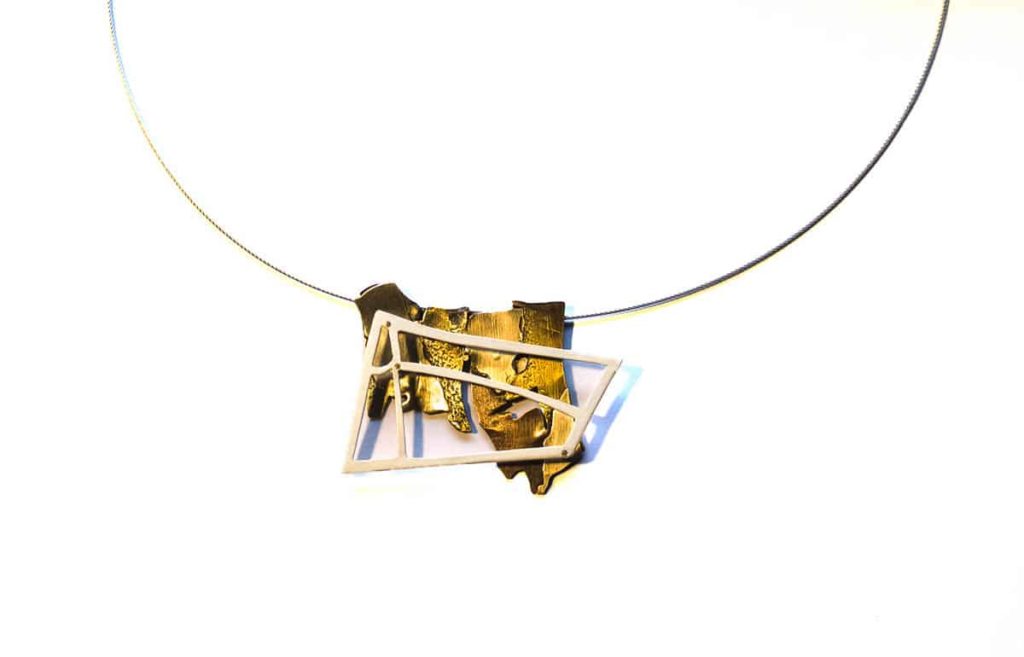
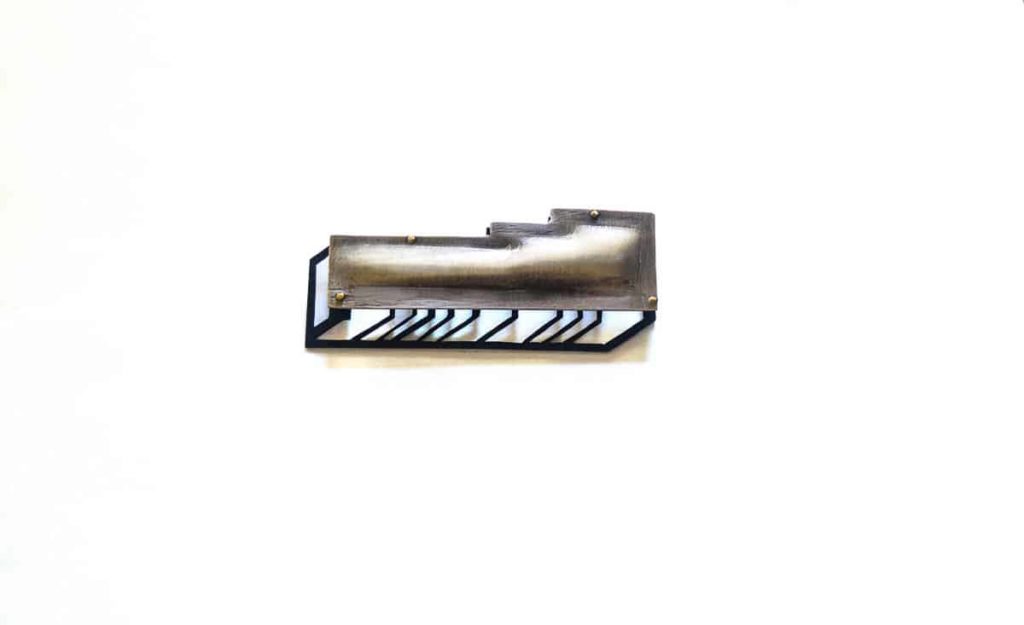

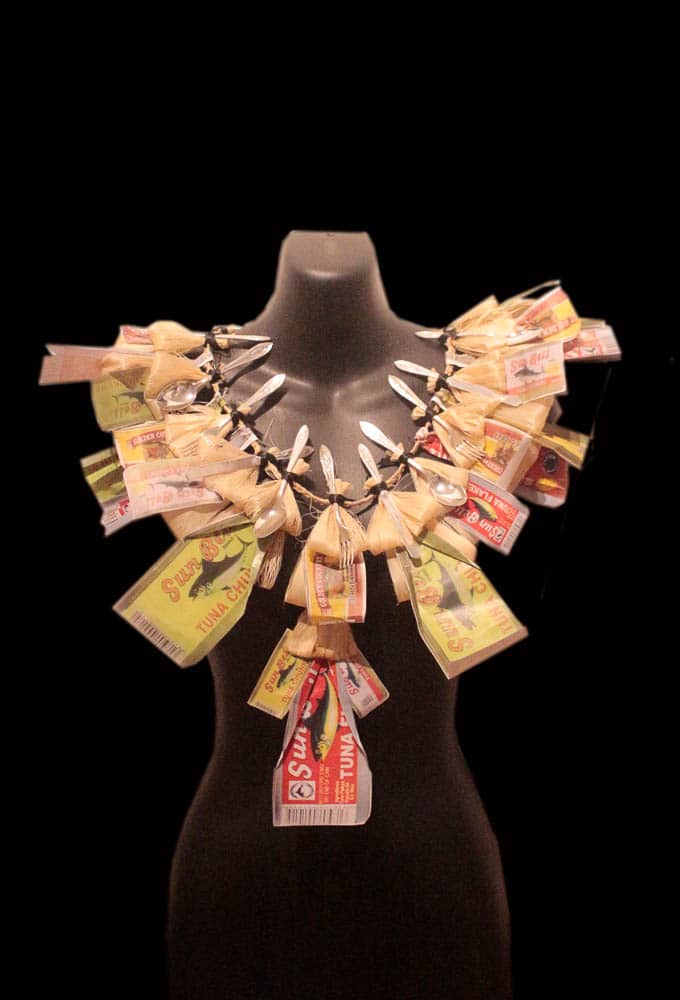
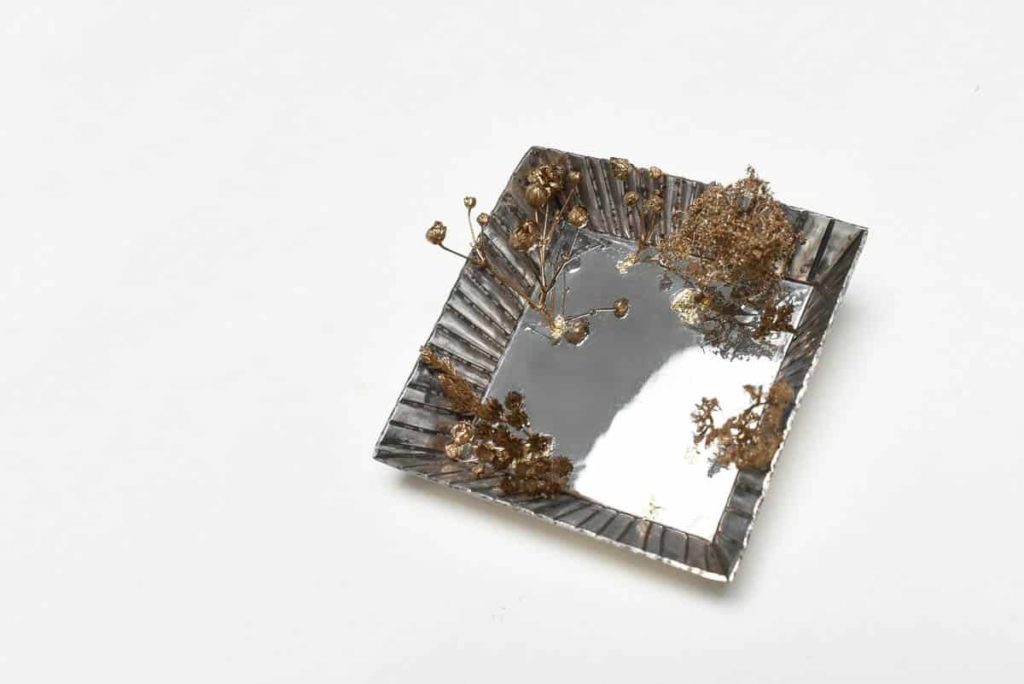

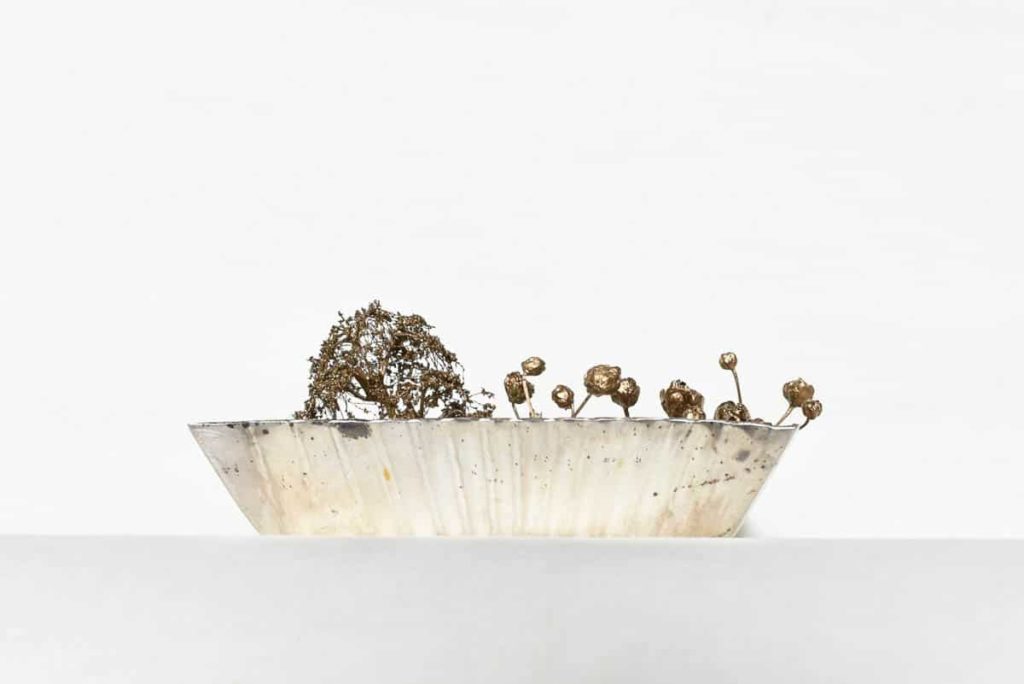


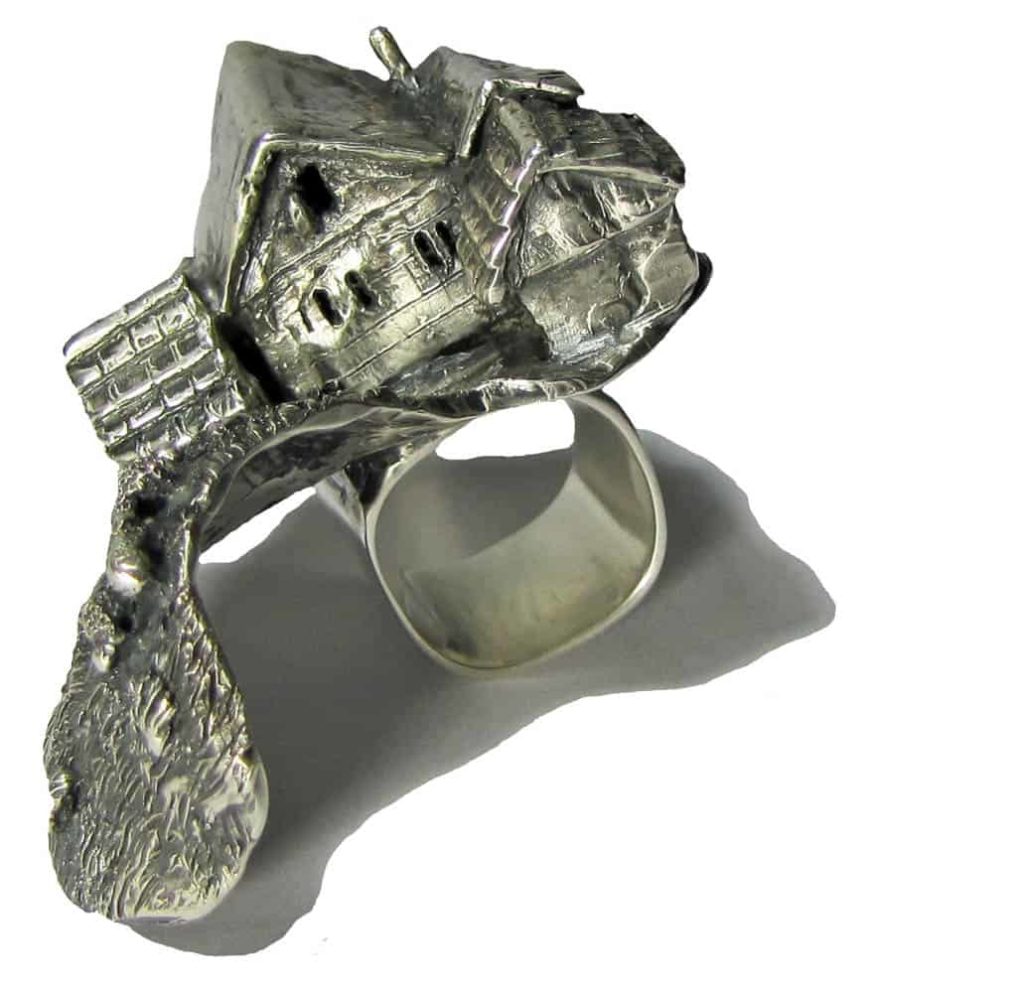

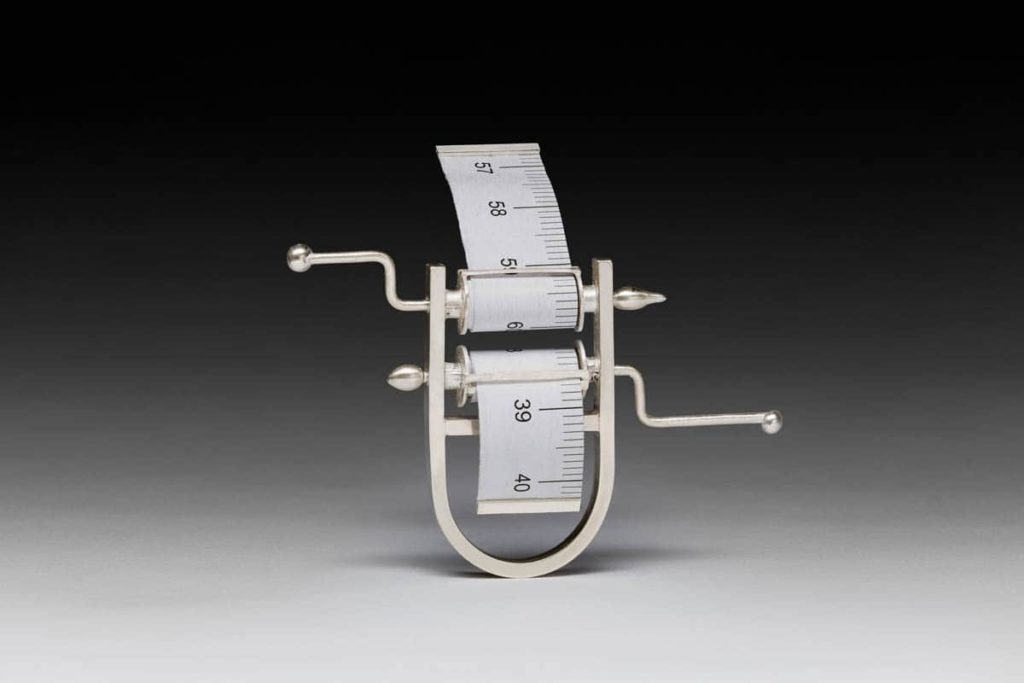
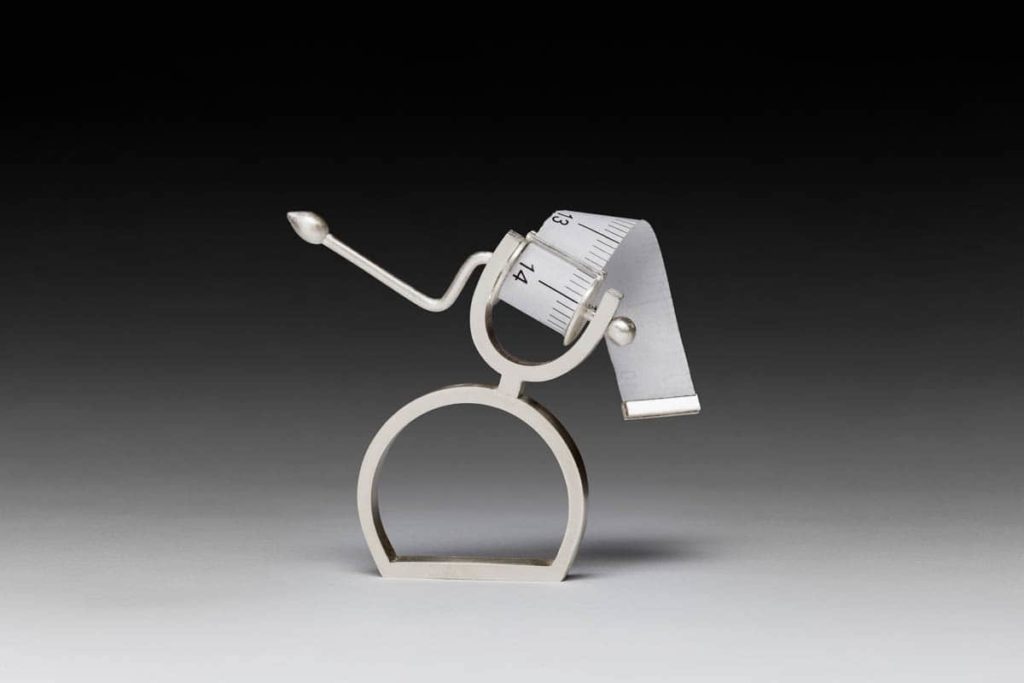

Comments
Thanks Mr. Kevin morray. It’s the very best way to inform people about every local traditional art in middle east and far east area.